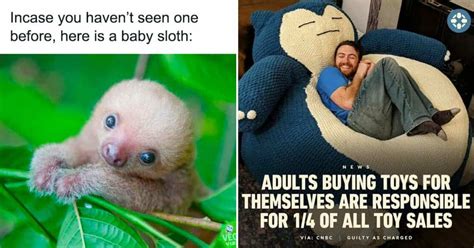
A domestic cat’s penchant for observing neighborhood activities has earned it viral fame, after its owner shared footage of the feline intently watching the outside world from its window perch. The cat, far from being simply “nosy,” as some might assume, appears to be deeply engaged in a pastime that provides it with entertainment and stimulation, according to its owner, who has captured numerous videos of the cat’s observational habits. The videos, showcasing the cat’s focused attention on outdoor happenings, have resonated with audiences online, highlighting the often-underestimated intelligence and curiosity of domestic felines.
Viral Video Captures Cat’s Fascination with Neighborhood Activities
A video featuring a cat engrossed in observing the outside world has gone viral, capturing the attention of animal lovers and social media users alike. The feline’s intense focus on its surroundings, as documented by its owner, suggests that watching neighborhood activities is not just a casual habit, but a dedicated pastime. The cat’s behavior, interpreted by its owner as a form of entertainment and mental stimulation, challenges the notion that such observational habits are merely a sign of being “nosy.”
The video, shared across various social media platforms, showcases the cat perched comfortably by a window, its gaze fixed on the happenings outside. From observing passersby to tracking the movements of birds and squirrels, the cat seems captivated by the dynamic environment beyond its indoor confines. The owner, who has been documenting the cat’s observational activities, suggests that this behavior is a regular occurrence, indicating a genuine interest in the world outside.
“He’s not being nosy; he is just entertained,” the owner noted, emphasizing the cat’s engagement with its surroundings. This perspective highlights the importance of understanding and appreciating the unique behaviors of pets, rather than simply labeling them with human-centric terms.
Understanding Feline Behavior: More Than Just Curiosity
The viral video provides an opportunity to delve into the complexities of feline behavior and the reasons behind their observational habits. Cats, by nature, are highly curious and observant creatures. Their keen senses and natural hunting instincts drive them to pay close attention to their environment, making them adept at noticing even the slightest changes and movements.
According to animal behaviorists, a cat’s interest in observing the outside world can be attributed to several factors. Firstly, it provides mental stimulation, which is crucial for their overall well-being. The ever-changing scenery and unpredictable nature of outdoor activities offer a constant source of novelty and engagement, preventing boredom and promoting cognitive health.
Secondly, observing the environment allows cats to fulfill their natural predatory instincts. Even though domestic cats are typically well-fed, their innate drive to hunt remains strong. Watching birds, squirrels, and other small animals triggers these instincts, providing a sense of purpose and satisfaction.
Furthermore, observational behavior can also be a way for cats to monitor their territory. Cats are highly territorial animals, and they often use visual cues to keep track of potential threats or rivals in their surroundings. By observing the outside world, they can stay informed about any changes or disturbances in their territory, allowing them to react accordingly.
The Benefits of Environmental Enrichment for Indoor Cats
The cat featured in the viral video highlights the importance of providing environmental enrichment for indoor cats. Confined to the indoors, cats can easily become bored and understimulated, leading to behavioral problems such as excessive grooming, destructive scratching, and aggression.
Environmental enrichment refers to the practice of providing cats with stimulating and engaging activities that mimic their natural behaviors. This can include providing them with toys, scratching posts, climbing structures, and opportunities to explore and investigate their surroundings.
One of the most effective ways to enrich a cat’s environment is to provide them with access to a window where they can observe the outside world. This allows them to satisfy their natural curiosity and predatory instincts, while also providing mental stimulation and preventing boredom.
In addition to windows, cat owners can also provide enrichment through interactive play, puzzle feeders, and training exercises. These activities not only provide mental and physical stimulation, but also strengthen the bond between cats and their owners.
Expert Opinions on Feline Observation and Enrichment
Veterinarians and animal behaviorists emphasize the importance of understanding and catering to the unique needs of cats. According to Dr. Sarah Matthews, a certified feline behaviorist, “Cats are naturally curious and intelligent animals, and they require mental stimulation to thrive. Providing them with opportunities to observe their surroundings is crucial for their well-being.”
Dr. Matthews also notes that observational behavior is a normal and healthy part of feline behavior. “It’s important to remember that cats are not simply being ‘nosy’ when they watch the outside world. They are engaging in a natural and instinctive behavior that provides them with mental stimulation and satisfaction.”
Furthermore, experts recommend that cat owners provide a variety of enrichment activities to keep their cats entertained and engaged. “A bored cat is often a destructive cat,” says Dr. Emily Carter, a veterinarian specializing in feline medicine. “Providing them with toys, scratching posts, and opportunities to climb and explore can help prevent behavioral problems and improve their overall quality of life.”
Social Media Reaction and Public Perception
The viral video has sparked a wave of reactions on social media, with many users expressing amusement and admiration for the cat’s observational skills. Comments range from lighthearted jokes about the cat being a “neighborhood watch” to more serious discussions about the importance of understanding feline behavior.
Many users have shared their own experiences with cats who exhibit similar observational habits, highlighting the universality of this behavior among domestic felines. Some have even posted photos and videos of their own cats perched by windows, eagerly watching the world outside.
The video has also prompted discussions about the ethics of keeping cats indoors. While some argue that indoor confinement is safer for cats, others believe that it deprives them of their natural instincts and freedoms.
The Broader Implications of Understanding Animal Behavior
The viral video serves as a reminder of the importance of understanding and appreciating the unique behaviors of animals. By taking the time to observe and interpret their actions, we can gain a deeper insight into their needs and motivations.
Understanding animal behavior is not only beneficial for pet owners, but also for conservation efforts and animal welfare initiatives. By learning about the natural behaviors of animals, we can develop more effective strategies for protecting them and ensuring their well-being.
In the case of cats, understanding their observational habits can help us create more enriching and stimulating environments for them, both indoors and outdoors. This can lead to happier, healthier, and more well-adjusted cats, as well as stronger bonds between cats and their owners.
The Cat’s Perspective: What Might the Cat Be Thinking?
While we can only speculate, considering the cat’s perspective adds another layer to understanding its behavior. Is it simply entertainment? Perhaps it’s a form of mental exercise, analyzing patterns and predicting movements. Does it feel a sense of connection to the outside world, even if it’s just through observation? Does it perceive potential threats or prey, honing its hunting skills vicariously? While anthropomorphizing can be misleading, imagining the cat’s thought process encourages empathy and a deeper appreciation for its intelligence and complexity. It reinforces the idea that “nosiness” is a simplistic label for a multifaceted behavior driven by instinct, curiosity, and a need for stimulation. This viral video highlights how understanding these drives, rather than dismissing them, can improve a cat’s life and the relationship with its human companion.
The Future of Feline Enrichment: Technology and Innovation
The growing awareness of the importance of feline enrichment is driving innovation in pet technology. Companies are developing interactive toys, virtual reality experiences for cats, and smart feeders designed to stimulate their minds and bodies. These technologies offer new ways to engage cats, especially those that spend a significant amount of time indoors.
However, technology is not a replacement for traditional enrichment methods. Windows, scratching posts, and interactive play remain essential components of a stimulating environment. The key is to combine technology with traditional methods to create a diverse and engaging experience for cats.
Furthermore, ongoing research into feline behavior will continue to inform the development of new and innovative enrichment strategies. As we learn more about the needs and preferences of cats, we can create environments that truly cater to their physical and mental well-being.
The Ethical Considerations of Pet Ownership
The viral video also raises ethical questions about pet ownership, particularly the responsibility of providing animals with adequate stimulation and enrichment. While many pet owners strive to provide the best possible care for their animals, some may not fully understand their needs.
It is important for potential pet owners to research the specific needs of the animal they are considering adopting and to be prepared to provide them with a stimulating and enriching environment. This includes providing them with adequate space, exercise, mental stimulation, and social interaction.
Furthermore, pet owners should be aware of the potential risks and benefits of keeping animals indoors. While indoor confinement can protect cats from certain dangers, it can also lead to boredom and behavioral problems. It is important to weigh these factors carefully and to make decisions that are in the best interest of the animal.
Ultimately, the viral video serves as a reminder that pet ownership is a responsibility that should be taken seriously. By understanding and appreciating the unique needs of our animal companions, we can create a more fulfilling and enriching life for them and for ourselves.
The Role of Social Media in Raising Awareness
The viral success of this video demonstrates the power of social media in raising awareness about animal behavior and welfare. Platforms like YouTube, Facebook, and Instagram provide a vast audience for sharing information and promoting positive change.
Animal shelters and rescue organizations are increasingly using social media to showcase adoptable animals and to educate the public about responsible pet ownership. These efforts can help to increase adoption rates and to reduce the number of animals in shelters.
Furthermore, social media can be used to connect pet owners with experts and resources, such as veterinarians, animal behaviorists, and trainers. This can help pet owners to make informed decisions about the care of their animals and to address any behavioral problems that may arise.
Conclusion: Appreciating the Feline Mind
The “spying” cat, as the headline playfully suggests, is more accurately a testament to the feline mind’s capacity for observation, curiosity, and engagement. The viral video provides a valuable opportunity to reflect on the importance of understanding and catering to the needs of our animal companions. By providing cats with stimulating and enriching environments, we can promote their physical and mental well-being and strengthen the bonds between cats and their owners. The act of watching, far from being mere nosiness, is a window into the complex inner world of a cat, a world we should strive to understand and enrich. The popularity of this video underscores a growing awareness and appreciation for the intricate nature of feline behavior, encouraging pet owners to move beyond simple labels and embrace the unique qualities of their feline friends. This shift in perspective can lead to better care, stronger relationships, and a deeper understanding of the animal kingdom.
Frequently Asked Questions (FAQs)
1. Why do cats like to watch the outside world?
Cats are naturally curious and observant creatures with strong hunting instincts. Watching the outside world provides them with mental stimulation, satisfies their predatory drives, and allows them to monitor their territory. The ever-changing scenery and unpredictable nature of outdoor activities offer a constant source of novelty and engagement, preventing boredom and promoting cognitive health. According to Dr. Sarah Matthews, a certified feline behaviorist, “Cats are naturally curious and intelligent animals, and they require mental stimulation to thrive. Providing them with opportunities to observe their surroundings is crucial for their well-being.”
2. Is it bad to keep a cat indoors all the time?
While indoor confinement can protect cats from certain dangers, it can also lead to boredom and behavioral problems if they are not provided with adequate enrichment. Indoor cats need opportunities to exercise, play, explore, and engage their natural instincts. Providing them with toys, scratching posts, climbing structures, and access to a window can help prevent boredom and promote their well-being. It’s a balance between safety and providing a stimulating environment. As Dr. Emily Carter, a veterinarian specializing in feline medicine, notes, “A bored cat is often a destructive cat…Providing them with toys, scratching posts, and opportunities to climb and explore can help prevent behavioral problems and improve their overall quality of life.”
3. What is environmental enrichment for cats, and why is it important?
Environmental enrichment refers to the practice of providing cats with stimulating and engaging activities that mimic their natural behaviors. This can include providing them with toys, scratching posts, climbing structures, puzzle feeders, and opportunities to explore and investigate their surroundings. Environmental enrichment is important because it helps to prevent boredom, reduce stress, and promote physical and mental well-being. Without adequate enrichment, cats can become bored, anxious, and destructive.
4. How can I provide my cat with more enrichment if I live in a small apartment?
Even in a small apartment, there are many ways to provide cats with enrichment. Vertical space is key – install shelves or cat trees to allow them to climb and explore. Provide a variety of toys that stimulate their hunting instincts, such as wand toys or puzzle feeders. Rotate toys regularly to keep them interested. Ensure they have access to a window where they can observe the outside world. Even a small window perch can provide hours of entertainment. Finally, dedicate time each day for interactive play, such as chasing a laser pointer or playing with a feather toy.
5. What are some signs that my cat is bored or understimulated?
Signs of boredom or understimulation in cats can include excessive grooming, destructive scratching, aggression, vocalization, changes in appetite, and lethargy. If you notice any of these signs, it’s important to assess your cat’s environment and provide them with more enrichment opportunities. Consider adding more toys, climbing structures, or interactive play sessions to their daily routine. Consulting with a veterinarian or animal behaviorist can also help you identify and address any underlying behavioral issues.









